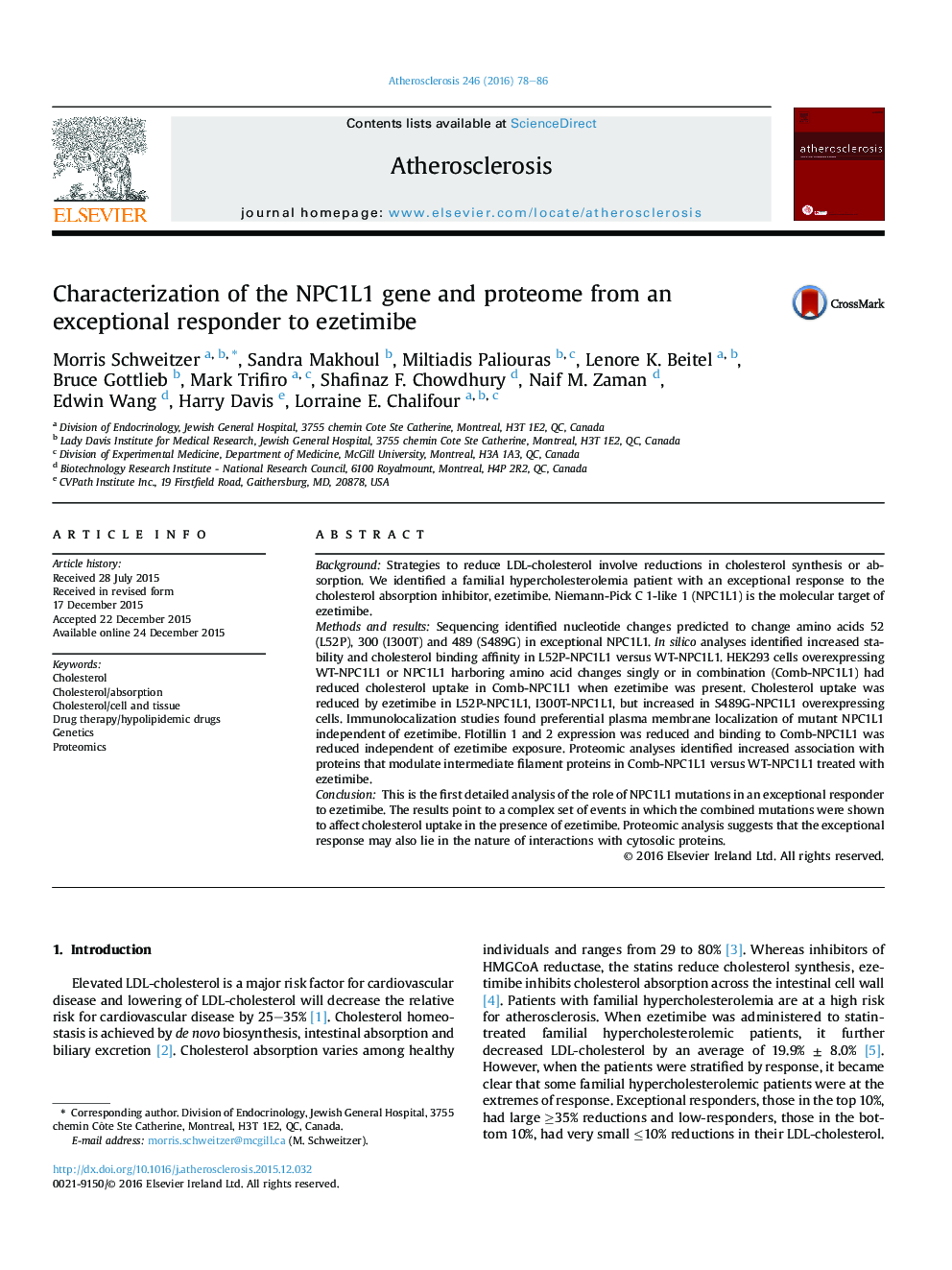| کد مقاله | کد نشریه | سال انتشار | مقاله انگلیسی | نسخه تمام متن |
|---|---|---|---|---|
| 5943406 | 1574719 | 2016 | 9 صفحه PDF | دانلود رایگان |

- NPC1L1 exon 2 amino acid mutations identified in an exceptional ezetimibe responder.
- Molecular modeling showed altered cholesterol entry and cholesterol binding.
- Amino acid changes reduced cholesterol uptake when ezetimibe was present.
- Major amino acids changes involved are L52P and I300T.
- NPC1L1 protein:protein interactions are altered.
BackgroundStrategies to reduce LDL-cholesterol involve reductions in cholesterol synthesis or absorption. We identified a familial hypercholesterolemia patient with an exceptional response to the cholesterol absorption inhibitor, ezetimibe. Niemann-Pick C 1-like 1 (NPC1L1) is the molecular target of ezetimibe.Methods and resultsSequencing identified nucleotide changes predicted to change amino acids 52 (L52P), 300 (I300T) and 489 (S489G) in exceptional NPC1L1. In silico analyses identified increased stability and cholesterol binding affinity in L52P-NPC1L1 versus WT-NPC1L1. HEK293 cells overexpressing WT-NPC1L1 or NPC1L1 harboring amino acid changes singly or in combination (Comb-NPC1L1) had reduced cholesterol uptake in Comb-NPC1L1 when ezetimibe was present. Cholesterol uptake was reduced by ezetimibe in L52P-NPC1L1, I300T-NPC1L1, but increased in S489G-NPC1L1 overexpressing cells. Immunolocalization studies found preferential plasma membrane localization of mutant NPC1L1 independent of ezetimibe. Flotillin 1 and 2 expression was reduced and binding to Comb-NPC1L1 was reduced independent of ezetimibe exposure. Proteomic analyses identified increased association with proteins that modulate intermediate filament proteins in Comb-NPC1L1 versus WT-NPC1L1 treated with ezetimibe.ConclusionThis is the first detailed analysis of the role of NPC1L1 mutations in an exceptional responder to ezetimibe. The results point to a complex set of events in which the combined mutations were shown to affect cholesterol uptake in the presence of ezetimibe. Proteomic analysis suggests that the exceptional response may also lie in the nature of interactions with cytosolic proteins.
Journal: Atherosclerosis - Volume 246, March 2016, Pages 78-86